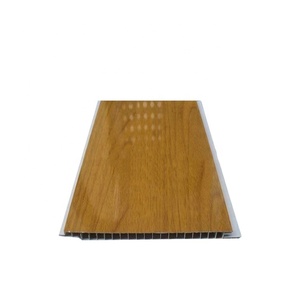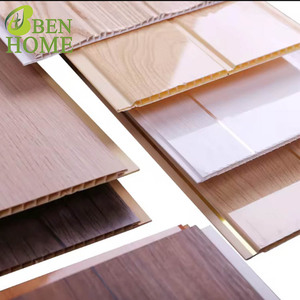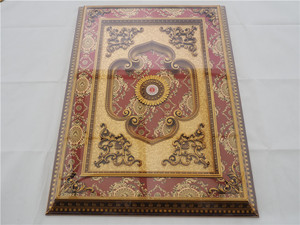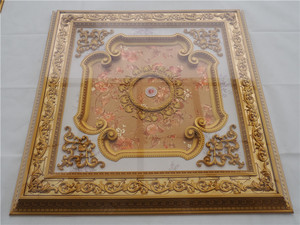(505 products available)































































































































































































































A styrofoam ceiling is a ceiling covered with styrofoam tiles. These tiles are used to decorate ceilings because they are lightweight and affordable. They help make ceilings more aesthetic and beautiful. Styrofoam ceiling tiles come in different designs, colors, and sizes. Some of the standard types are listed below:
Acoustic Ceiling Tiles
Sound can be absorbed or blocked from passing through acoustic ceiling tiles. These tiles reduce noise levels in a room by preventing echoes and sound waves. Acoustic ceiling tiles are used in commercial buildings, offices, and theaters. They are also suitable for residential areas that love quiet.
Decorative Ceiling Tiles
Styrofoam ceiling tiles are used to make decorative ceiling tiles. These tiles add beauty to the ceiling and the entire room. They are available in different patterns, colors, and textures. Decorative ceiling tiles are suitable for living rooms, dining areas, and any space that needs to be more attractive.
Drop Ceiling Tiles
Drop ceiling tiles are also known as suspended ceiling tiles. These tiles are installed below the original ceiling using a grid framework. Maintenance can be done on plumbing, wiring, and HVAC systems without disturbing the ceiling. Acoustic and decorative ceiling tiles can be dropped or suspended.
Insulation Ceiling Tiles
Insulation ceiling tiles help to maintain a room's temperature. They keep the room warm during winter and cool during summer. Insulation ceiling tiles also reduce noise and save energy. Some of the insulation ceiling tiles are made with polystyrol and EPS, which are good insulators.
Stain-Resistant Ceiling Tiles
Stain-resistant ceiling tiles can be cleaned and are not easily stained. They are used in areas where ceilings can be stained, like kitchens and bathrooms. These ceilings are durable and maintain their appearance for a long time.
Molded Styrofoam Ceiling Tiles
These tiles are made from polystyrene. They are shaped and molded into different patterns and designs. They are lightweight and easy to install, as they can be glued directly onto the surface.
Pressed Tin Look Ceiling Tiles
These tiles have a design that looks like pressed metal. The patterns are bold and beautiful, creating an aesthetic ceiling. They are made from polystyrene and are lightweight.
When buying a styrofoam ceiling for sale, it’s important to understand the features and benefits that will appeal to customers. Here are some key points to cover.
Lightweight
Styrofoam ceiling tiles are made from extruded polystyrene foam which is lightweight. This makes them easy to handle and install. The reduced handling costs and ease of installation appeal to contractors and homeowners.
Water-resistant
Styrofoam ceilings are water-resistant. This means they won’t absorb water or moisture. This helps to prevent the growth of mold and mildew. Their use in bathrooms and kitchens makes them an attractive choice for homeowners looking to improve their ceilings.
Cost-effective
Styrofoam ceiling tiles are generally cheaper than traditional ceiling materials like wood, plaster, or drywall. This makes them a cost-effective choice for homeowners and businesses looking to renovate or improve their space on a budget.
Design versatility
Styrofoam ceiling tiles come in different designs, styles, shapes, and sizes. For example, there are ceiling tiles that mimic the appearance of expensive materials like tin or wood. Other ceiling tiles feature intricate patterns and textures. This feature allows homeowners to customize the ceilings to suit their tastes and preferences.
Insulation properties
Styrofoam acts as an insulator. When used on ceilings, it helps to regulate the building's temperature by keeping it warm in winter and cool in summer. Additionally, a regulated temperature can lead to energy savings. Therefore, buildings that have styrofoam ceilings are more energy efficient.
Easy maintenance
Styrofoam ceilings are easy to maintain. Most ceilings are dust and water-resistant. As a result, they are simple to clean with a damp cloth or sponge. This not only saves time but also reduces the need for special cleaning products. Their ease of maintenance makes them a popular choice for commercial spaces with extensive ceilings.
Easy installation
Installing a styrofoam ceiling is generally easier than installing a ceiling made of other materials. For example, ceilings made of plaster or drywall require special tools and skills. However, a styrofoam ceiling can be installed using basic hand tools. Some ceiling tiles simply stick to the ceiling using adhesive.
There are several scenarios for using styrofoam ceilings. These include the following:
Residential Spaces
Styrofoam ceilings can be used in residential spaces such as living rooms, bedrooms, kitchens, and dining areas. They improve the aesthetic appeal by making it look more stylish and elegant. They also serve as functional decor by offering decorative ceiling tiles that improve the overall ambience. Additionally, they improve insulation by enhancing thermal insulation, which keeps the house warm during cold seasons and reduces energy costs. Furthermore, they improve noise reduction as they absorb sound, leading to a quieter home.
Commercial Spaces
Styrofoam ceilings are used in commercial spaces such as offices, retail stores, restaurants, hotels, and conference centers. In commercial spaces, they enhance the appearance by providing a clean and professional look. They also reduce noise distraction, which improves focus and productivity. Additionally, they save costs by reducing energy consumption, which is beneficial to businesses.
Functional Styrofoam Ceilings
These ceilings are applicable in different scenarios, and their functional benefits are diverse. For instance, their lightweight nature makes them easy to install. They are also moisture resistant, which prevents mold and mildew growth. Additionally, they are customizable, and different designs and patterns are available to suit different preferences and needs.
There are many factors to consider when choosing a ceiling tile. Here is a detailed guide on how to choose the perfect styrofoam ceiling tile.
Tile Functionality
Consider the ceiling tile's functionality before anything else. If the ceiling tiles are just for aesthetics, almost any type or design will work. However, if the ceilings are to be used to insulate the room, waterproof them, or reduce noise, then specific tiles must be chosen for those functions.
Tile Design
Once the tile functionality has been established, it is time to look at their designs. The tile design is very important, especially for ceilings in rooms where people spend a lot of time, like living rooms or offices. Choose tiles with designs that will complement the room's décor or style.
Tile Size and Shape
The tiles' sizes and shapes must also match the ceiling's dimensions. If the ceiling is irregularly shaped or curved, special tiles may be needed to cover those areas.
Tile Durability
Another important factor to consider is durability. If the ceiling is in a room that gets a lot of traffic or movement, like a hallway or stairwell, the tiles will need to be more durable than those used in a less-trafficked space.
Tile Cost
Cost is also a consideration when choosing ceiling tiles. There are many different price points, so it is important to find something that fits the budget. However, it is also important to remember that the cheapest option is not always the best.
Tile Installation
Another factor to consider is how the tiles will be installed. Some require glue, while others need to be stapled or nailed on. It is important to choose a product that one is comfortable installing, as some options are more difficult than others.
Tile Maintenance
Ceiling tiles can also differ in how easy they are to maintain. Some just need a quick wipe-down to stay clean, while others may need special cleaning products. If maintenance is a concern, choose tiles that will be easy to take care of.
A:
There are several disadvantages of using a Styrofoam ceiling including:
Q: Are Styrofoam ceiling tiles durable?
A: Yes, Styrofoam ceiling tiles are durable. They are not easily damaged by water, rust, or rot. Additionally, they are resistant to shrinking, spreading flames, pests, and insects.
Q: What are ceiling tiles made of?
A: Ceiling tiles are made from different materials, such as: